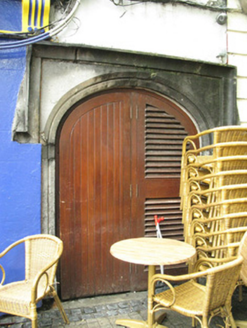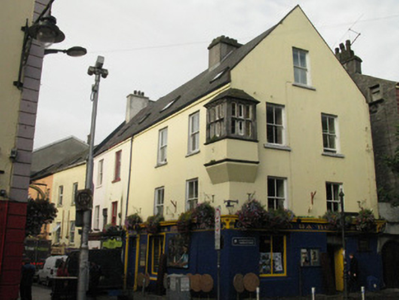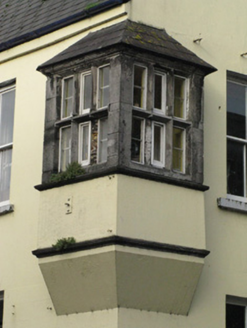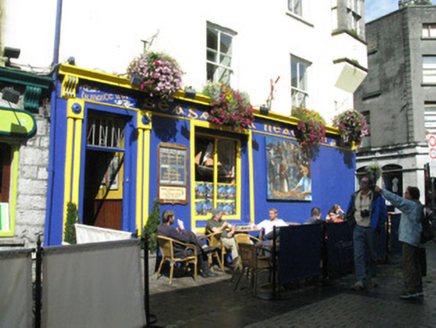Survey Data
Reg No
30319013
Rating
Regional
Categories of Special Interest
Archaeological, Architectural, Historical, Social
Original Use
House
In Use As
Public house
Date
1575 - 1900
Coordinates
129729, 225053
Date Recorded
04/09/2008
Date Updated
--/--/--
Description
Corner-sited end of terrace two-storey with attic public house, built c.1600, and reordered c.1880, having two-bay elevations to two streets. Oriel window to corner at second floor level. Pitched slate roof with recent roof-lights, rendered chimneystack, coping to gable and cast-iron rainwater goods, hipped slate roof to oriel. Lined-and-ruled painted rendered walls having rendered eaves course and battered section to ground floor of Quay Street elevation. Dressed limestone to oriel window, with moulded stone sill course and moulded stone cornice and triple-light transomed and mullioned window. Square-headed window openings to upper floors and attic floor, having painted stone sills and two-over-two pane timber sliding sash windows. Bipartite fixed timber display windows to ground floor. Render shopfront with pilasters flanking entrances, timber architrave and cornice supported on render scroll-work brackets, square-headed door openings having flanking render panelled pilasters, timber panelled and double-leaf battened timber doors with overlights. Round-headed door opening in walling to north-west end of Cross Street Upper elevation has tooled limestone surround and label-moulding with label-stops and replacement timber doors.
Appraisal
This former town house once belonged to Richard Martin, founder of the Royal Society for the Prevention of Cruelty to Animals and universally known as Humanity Dick, a nickname given to him by King George IV. Its location, at a prominent crossroads in the city, makes this a landmark in the city centre. The principal features of interest are the unusual and well preserved oriel late-medieval window, and the doorway with label-moulding to the secondary elevation. The retention of timber sliding sash windows enhances the building.







